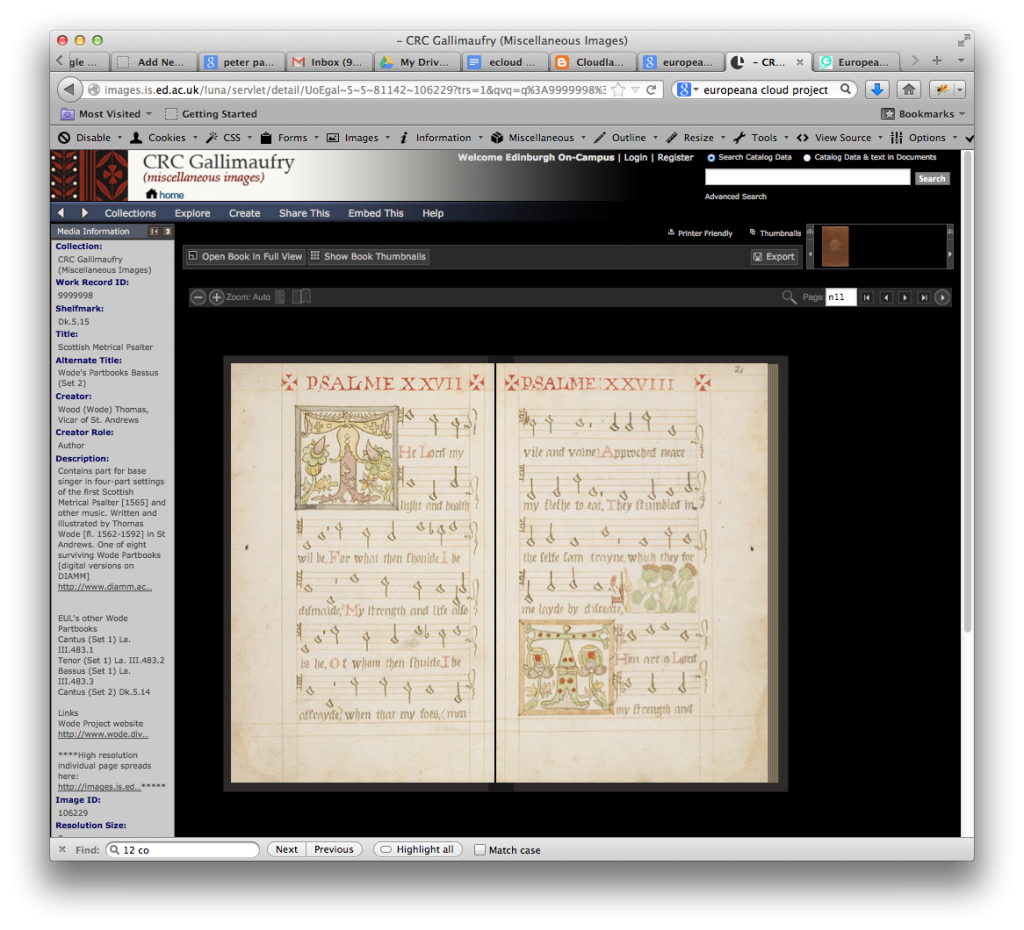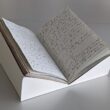Home University of Edinburgh Library Essentials
December 15, 2025
Europeana Cloud Plenary, Athens, March 18-19
Posted on March 24, 2014 | in Collections, CRC, Development, events, Featured, Project updates, Projects | by Scott RentonThe Europeana Cloud project hosted its annual plenary meeting at the Royal Olympic Hotel, Athens, on March 18-19. Norman Rodger (P & I) and Scott Renton (LDD) represented the University at the event.
Two very useful days were spent looking back on the previous year, and looking forward to the year ahead: while we have fulfilled our commitment to deliver 7,000 images as research material to the cloud (we gave 12,000+), we are committed to the project for two more years, so it was interesting to communicate with other data providers and work package leaders to get their thoughts.
Building on the infrastructure
The infrastructure is not quite complete, but ultimately the data which has been uploaded to Europeana will be moved onto the cloud architecture.
The aim for the cloud, ultimately, is to serve as a definitive resource for all sorts of research material. For example, many providers may offer representations of the same work, but ultimately these should merge their way into one record, and then, after careful consideration about an ‘access framework’, be refined and improved. Obviously there is much debate over who should be allowed to edit what, and a lively exercise about this took place.
Tools, apps etc. will be developed to work on the cloud infrastructure too, and the aim is to end up with an overall resource called Europeana Research. Breakout groups as to how this could look and a full-delegate exercise about its priorities regarding roles and functionality also took place.
Data providers’ view
We are a data provider- we won’t be building apps etc, but we can give input into what we’d like to see done with our content. One aspect of further work is to develop microsites based on specific discipline, and there is a drive to build a prototype site on musicology, around manuscripts pre-1600. We were happy to engage in this debate, as we have already uploaded relevant material such as the Wode Part-Books (see the Book Reader object here- it is a thing of beauty!).
Ideas for this project include bringing together musicologists to improve metadata, annotate images, transcription of the scores using OMR (the musical manuscript version of OCR!), and markups such as Music XML and MEI, which would allow the machine to read and play the scores, and (hopefully) allow some link-up to existing sound files, video, and images of instruments (we did of course give Europeana all of our instrument content for MIMO). We have let it be known we’re keen to get involved- we may even be able to improve our own records as a result.
Other things potentially upcoming are an e-Cloud related maps project, where they are looking for mediaeval map content. We have no shortage of this (see the Charting the Nation image collection), and we have not yet given it to them. On top of that, there are at least a thousand more LUNA images ready to upload, so these can move through to Europeana as well.
Another area that was explored in depth was the governance of Europeana Cloud, post project, and a task force is being established to review this. It is likely that we will be involved in this process as the project moves into Year 2.
Communicating Europeana
One of the big issues that was identified this week was how to communicate and promote the good things that Europeana are doing. It’s something that everyone needs to get involved in to justify the effort and cost that’s gone into it. We will surely get a chance to do our bit next year, as Edinburgh has been volunteered to host the plenary next March!
Collections
 Hill and Adamson Collection: an insight into Edinburgh’s past
My name is Phoebe Kirkland, I am an MSc East Asian Studies student, and for...
Hill and Adamson Collection: an insight into Edinburgh’s past
My name is Phoebe Kirkland, I am an MSc East Asian Studies student, and for...
 Cataloguing the private papers of Archibald Hunter Campbell: A Journey Through Correspondence
My name is Pauline Vincent, I am a student in my last year of a...
Cataloguing the private papers of Archibald Hunter Campbell: A Journey Through Correspondence
My name is Pauline Vincent, I am a student in my last year of a...
Projects
 Cataloguing the private papers of Archibald Hunter Campbell: A Journey Through Correspondence
My name is Pauline Vincent, I am a student in my last year of a...
Cataloguing the private papers of Archibald Hunter Campbell: A Journey Through Correspondence
My name is Pauline Vincent, I am a student in my last year of a...
 Archival Provenance Research Project: Lishan’s Experience
Presentation My name is Lishan Zou, I am a fourth year History and Politics student....
Archival Provenance Research Project: Lishan’s Experience
Presentation My name is Lishan Zou, I am a fourth year History and Politics student....



